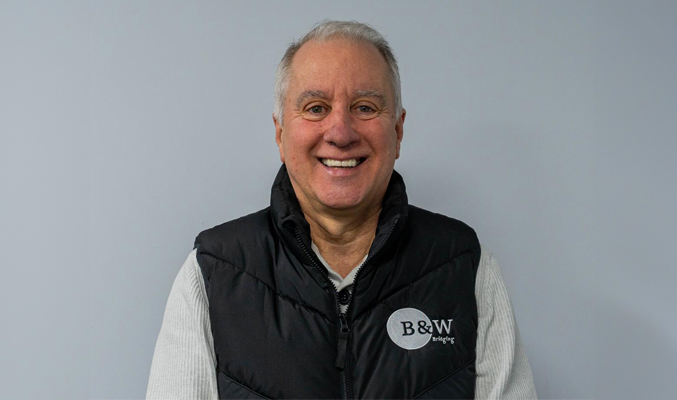How your bridging loan could save thousands of tonnes of CO2
By Hannah Duncan

Can you change the world with one idea? Or one phone call? Fifteen years ago, a small group of Swedish pension fund managers did.
They’d read an alarming report about how global warming could one day engulf the planet in floods, fires and devastation.
Picking up the phone, the small group made a history-changing call to the World Bank. The managers asked to borrow capital to make their holdings more sustainable. The green bond was born.
From one phone call to $2.3 trillion
More than 200 green bonds have since been issued by the World Bank across 25 currencies, covering around $18 billion.
But the World Bank is not the only issuer. Over recent years, the green bond market has exploded. It’s now a $2.3 trillion industry, according to today’s Climate Bonds data.
From one phone call came an eruption of impactful ideas and solutions. Energy companies have transformed from dirty to renewable energy. Entire countries have upgraded their infrastructure to support a low-carbon future.
The pension fund managers were not responsible for upgrading the holdings. Nobody told them to do it. They simply took the initiative, acted like true leaders and did it. What’s stopping bridging lenders from doing the same?
Looking for ways to cut emissions? 22 ideas for bridging lenders
EPC ratings are a good first step… in a long road
Some bridging lenders have already started. The building sector accounts for 38% of the UK’s carbon emissions, and there is lots of scope for improvement. Some have even issued their own green bonds.
In 2022, LendInvest launched a green bond framework. The bonds boost energy efficiency within the bridge-to-let industry. Some efficiencies include insulation, solar panels and replacement glazing units. According to the lender, it’s goal is to “decarbonise the UK’s housing stock, which is responsible for 14% of total UK emissions”.
One year previously, specialist lender and banking group Paragon also unveiled a green bond product. It focused on the Buy-to-Let market, and aimed to help landlords make properties more energy efficient.
Across the bridging market, many lenders have begun to issue green policies and ESG frameworks. Green mortgages are expected to explode over the next months. As of January 2023, there are already 533 on the UK market.
But there is a problem. The UK’s property lenders have hunkered down – almost exclusively – on EPC ratings. It’s a good first step, but not the solution. After all, we’re facing a climate crisis, not an EPC crisis.
We need to overcome floods, fires, food scarcity, water pollution and the kind of weather that used to only exist in the bible. An improved EPC rating won’t stop towns from going underwater. It won’t put out the fires. And it won’t help to avoid species extinction.
To make an impact, lenders must think BIG.
Where are the biodiversity loans?
One in six properties in England are now at risk of flooding, as a direct consequence of the climate crisis. Something lenders could do to help is encourage buyers to plant trees and hedgerows on the land. Simple but effective.
The deep roots of hedgerows soak up excess water. This prevents flooding, while helping the leaves to grow and absorb more carbon.
A single kilometre of hedgerow absorbs between 600 – 800kg of carbon each year. 10 kilometres sequesters more than seven tonnes. If lenders offered clients a better rate for planting hedgerow – or doubling-up the rows – they could prevent thousands of tonnes of CO2 escaping into our atmosphere.
For some plots and properties, this would be a much more impactful way to mitigate climate change than simply notching up from a C to an B energy rating. Since the 1950s, we’ve lost over half of our hedgerows, making floods much more common.
Not all properties come with fields. But almost all sites can be used to help pollinators like bumble bees. These creatures are our secret weapon in the fight against the climate crisis, as they spread pollen and keep plants growing.
If lenders can provide products designed to reduce pesticides, encourage green walls, compost heaps, window boxes or wild flowers, they can make a serious impact.
How about modular construction loans?
Another way to dramatically cut down on construction waste and carbon emissions is through the building method itself.
Traditional building methods waste around 30% of materials. That’s a lot of bricks, cement, steel, timber and iron. If you think about it, the leftovers from three properties, could build a fourth! By contrast, modular builds leave just 1.8% waste.
Some lenders are honing in on this more planet-friendly way of building. Impact Capital, Investec and Bridge Invest have all focused on this low-carbon solution.
Underwriting modular construction takes time and expertise. Getting to grips with this new technology will become a hot topic over the coming years.
Stop talking about going green and start underwriting new technology
Now is the moment: Use finance to incentivise change
There’s no question money motivates us. We love getting it and we hate losing it.
Today, as the collapsing US banks suck up liquidity, borrowers are expected to turn to alternative sources of finance. This puts bridging lenders in a unique position of power.
The iron is hot. It’s time to strike.
There’s a myriad of green options and ideas out there waiting to be uncovered. Each property has the potential to be better. And each deal has the power to do real good in the world. Every lender, no matter how big or small can do something to change the UK’s dire landscape. The only bad thing is doing nothing.
At the Chartered Bankers’ Institute Young Banker of the Year Awards 2022, one finalist passionately advocated for lobbying the government. She maintained that it should be the lenders pushing for green policies, and not just following them. The feeling is already in the air. The moment is ripe for big ideas.
Like the history-making Swedish pension fund managers, lenders can take charge and lead the future.
If not you, then who? And if not now, then when?

Hannah Duncan is a freelance writer with a passion for finance, sustainable investing and fintech. She loves writing engaging content for industry magazines and investment services, as well as keeping a personal blog at www.hdinvestmentcontent.com










You must be logged in to post a comment.